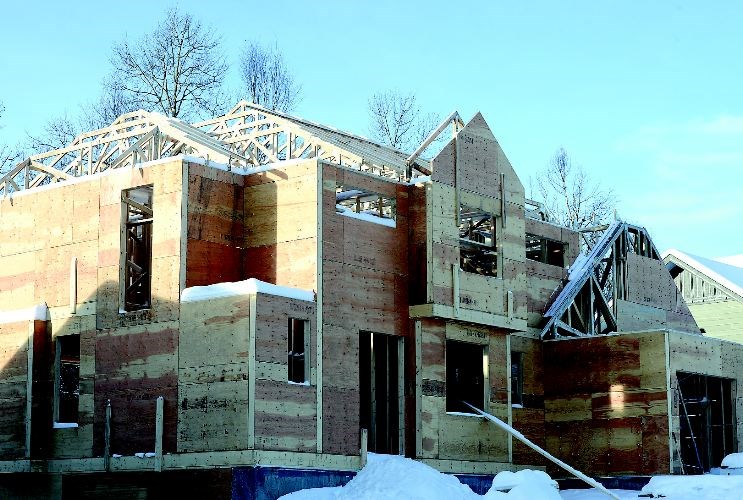The city's population has decreased, according to the latest estimate from B.C. Stats, leaving Prince George mayor Lyn Hall both surprised and disappointed.
As of July 1, 2015, the city's population stood at 71,363 people, down 1,958 or 2.7 per cent from the year before, the agency said in a release this week.
For Hall, the decline is at odds with what he's seen and experienced.
"When I take a look at what's occurring in the community - the residential starts in the community, the community announcements that are going to be forthcoming - there is a great deal of activity in the city from an economic perspective.
"So to hear that we've dropped nearly 2,000 is surprising to me."
B.C. Northern Real Estate Board reports have shown a steady rise in both sales and the average price for a single family home in the city.
Likewise, there was a post-recession record 169 starts on single family homes in and around the city in 2015, according to Canada Mortgage and Housing Corporation. However, the number and total value of building permits taken out at city hall are down. In all, 485 permits for $88.4 million worth of work were taken out over 2015, compared to 509 permits for $125.7 million in 2014.
And permits for new single-family homes stood at 111, worth $32 million in total, down from 126 permits for $35.2 million over 2014.
Getting a precise gauge of the city's population is important, said Hall, because it can play a role in deciding how much funding the city can receive from the federal and provincial governments through various programs.
"If your population decreases, it could have some impact," he said.
It only adds to the importance of responding accurately and fully to census takers when they take to the streets this summer for the 2016 count, in Hall's opinion.
"It's so important to get out and vote," he said. "It's equally important for people to fill out the census because that census document that you're filling out means you're being counted for some very important reasons and one of those reasons is to provide for financial opportunity for the city based on population, based on growth, when you talk about transfer payments from the feds or the province."
Hall is trying to get more information on how B.C. Stats arrives at its numbers.
According to an emailed statement from B.C. Stats, they take the most recent federal census figures, from 2011, and looks at various indicators - notably BC Hydro connections and B.C. health client registry numbers in the case of small population communities - to come up with estimates.
For the Prince George census agglomeration, which also covers areas adjacent to city limits, the total is 83,823, a decline of 1,838 people or 2.1 per cent.
Population decreasing across the north
Here's a look at population figures from elsewhere in northern B.C.:
For the Fraser-Fort George Regional District as a whole, the figure was 91,277, down 2,011 people or 0.5 per cent.
Mackenzie's population was 3,499, down 24 people; Valemount's was 955 people, down eight people; McBride's was 577, down seven people; and for the unincorporated areas it was 14,883, down 14 people.
For the Bulkley-Nechako Regional District as a whole, the figure was 39,997, down 153 people or 0.4 per cent.
Vanderhoof's population was 4,492, down 22 people; Fort St. James' was 1,776, down 17 people; Fraser Lake's was 1,149, down 18 people; Burns Lake's was 1,829, down 153 people; Granisle's was 304, down two people; Houston's was 3,120, up five people; Telkwa's was 1,352, down 14 people; Smithers' was 4,932, down 143 people; and for the unincorporated areas it was 21,043, down 211.
For the Cariboo Regional District as a whole, it was 62,263, down 619 people or one per cent.
Quesnel's population was 9,160, down 601 people; Wells' was 232, down two people; Williams Lake's was 11,215, up 266 people; 100 Mile House's was 1,913, up 30 people; and for the unincorporated areas it was 39,743, down 312 people.
For the Peace River Regional District as a whole, it was 63,918, down 888 people or 1.4 per cent.
Fort St. John's was 20,778, down 340 people; Dawson Creek's was 11,944, down 304 people; Chetwynd's was 2,686, down 46 people; Tumbler Ridge's was 2,647, down 284 people; Taylor's was 1,500, up 21 people; Hudson's Hope's was 1,033, down two people; and Pouce Coupe's was 713, down 18 people; and for the unincorporated areas, it was 22,617, up 85 people.
For the Kitimat-Stikine Regional District as a whole, it was 38,621, down 420 people or 1.1 per cent.
Terrace's population was 11,164, down 33 people; Kitimat's was 8,211, down 254 people; New Hazelton's was 653, down nine people; Hazelton's was 263, down seven people; Stewart's was 422, down three people; and for the unincorporated areas it was 17,908, down 114 people.
For the Skeena-Queen Charlotte Regional District as a whole, it was 17,533, down 523 people.
Prince Rupert's population was 11,386, down 443 people; Queen Charlotte City's was 943, up five people; Masset's was 876, down seven people; Port Edwards was 500, down 33 people; Port Clements' was 365, down seven people; and for the unincorporated areas, it was 3,463, down 38 people.



